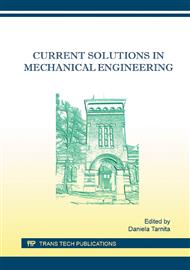p.173
p.181
p.187
p.193
p.199
p.205
p.211
p.217
p.223
On the Progressive VZN Shock Absorber Performances and Dissipated Energy
Abstract:
The VZN shock absorber concept granted with European Patent EP 1 190 184 is characterized by damping coefficients self according with road and load conditions.The simulations made on vehicles equipped with new VZN shock absorbers concept relative to standard one, indicates better behavior concerning stability, comfort and reduced dissipated energy, with fuel consumption and pollution reducing effect.Starting on these remarks the paper evaluates the influence of the damping characteristic in suspension performances and dissipated energy, based a simulation on a Californian road realized with Matlab Simulink software.Since year 2006 simulations on model ¼ cars demonstrates the VZN damper concept give skyhook behavior, decrease squat, vertical acceleration, the number and intensity of stopper bumper collision, the adherence, increasing thus the vehicle stability, comfort and reliability.Tests on models ½ car, show the VZN concept increases stability at pitch and roll and confirm the previous results obtained on ¼ models.The current work completed previous research with one demonstrating other VZN qualities e.g. its capacity to manage damping coefficient, no more and no less, assuring high performances and thus reducing the dissipated energy, with favorable effect for reducing fuel consumption and pollution.The comparison between the behaviors of the VZN shock absorber relative to the standard shock absorber has been realized for body displacement, squat, acceleration and dissipated energy.The VZN progressive damper concept gives better behavior comparative to standard one, 6% at car body bounce, 37 % for RMS acceleration and 28.4 % for dissipated energy, these means it confer better body-ground clearance, comfort and fuel consumption and pollution.The VZN damping coefficients accorded with the vehicles load and with road unevenness confer a soft response at low excitation and strong reactions at high excitations, dissipating energy function of the needs, assuring thus comfort at small and medium excitation and protecting the axles and body at hard conditions.
Info:
Periodical:
Pages:
199-204
Citation:
Online since:
January 2016
Authors:
Keywords:
Price:
Сopyright:
© 2016 Trans Tech Publications Ltd. All Rights Reserved
Share:
Citation:


